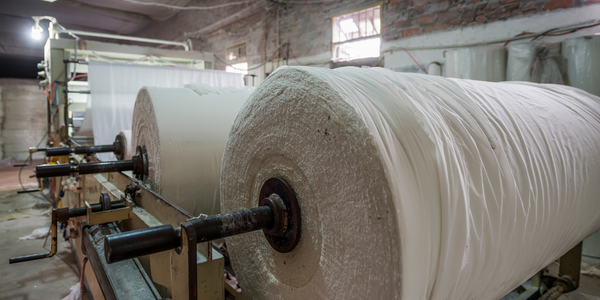Technology Category
- Application Infrastructure & Middleware - Data Exchange & Integration
- Application Infrastructure & Middleware - Middleware, SDKs & Libraries
Applicable Industries
- Electronics
- Paper & Pulp
Applicable Functions
- Maintenance
- Procurement
Use Cases
- Leasing Finance Automation
- Smart Contracts
Services
- System Integration
About The Customer
Innovatix, LLC is the nation’s largest group purchasing organization (GPO) serving the non-acute care marketplace. It helps thousands of members throughout the United States and Puerto Rico achieve substantial savings on their daily purchases. Innovatix is dedicated to maintaining and growing an industry-leading contract portfolio of products and services that supports the goal of reducing expenses, while helping maintain and enhance the quality of services and care provided. Affiliate GPO, Essensa, is the newest and fastest growing GPO offering solutions for improved operating margins and supply chain management efficiencies for non-acute health care providers and other commercial markets nationwide. The companies manage a contract portfolio that gives preferred pricing for a vendor’s products and/or services; they facilitate their members’ execution of these contracts and work with wholesalers to ensure members are getting their proper pricing.
The Challenge
Innovatix, the nation’s largest group purchasing organization (GPO) serving the non-acute care marketplace, was facing a significant challenge in managing its membership paperwork process. The company, along with its affiliate GPO, Essensa, manages a contract portfolio with thousands of contracts and processes over 10,000 contract documents per month. To join Innovatix or Essensa GPO, prospects must submit membership paperwork and contract documents with varying levels of detail. In some cases, there could be dozens of documents totaling over 100 pages. Many of these documents are provided by vendors, limiting the flexibility in streamlining the volume of paperwork. The company wanted to transition from a paper-based system to an electronic document generation system that integrated with their recent implementation of Microsoft Dynamics CRM® 2011 and supported automatic identification of documents and electronic (digital) signatures.
The Solution
Innovatix used Nintex AssureSign to build a complete solution to generate documents and send out for signature quickly and easily. The document generation solution was custom-built by the company’s internal development team. It integrated with the company’s internal CRM system (Microsoft Dynamics® CRM 2011) and relied on Microsoft SharePoint and many custom solutions to provide a web-based document generation platform. This allowed account representatives to search, review, generate and transmit large volumes of documents entirely from their web browser. Nintex AssureSign’s robust API enabled Innovatix to control the document generation and signing process programmatically. It allowed the company to translate their internal PDF documents using code to Nintex AssureSign templates, eliminating the need for them to manage two sets of documents. Nintex AssureSign’s web services further allowed tight integration into their existing business process. Users then have the option to create PDF documents with bar codes that can later be faxed or scanned, or translate the PDF documents into Nintex AssureSign templates and begin the electronic signature process with their internal systems.
Operational Impact
Quantitative Benefit

Case Study missing?
Start adding your own!
Register with your work email and create a new case study profile for your business.
Related Case Studies.

Case Study
Remote Temperature Monitoring of Perishable Goods Saves Money
RMONI was facing temperature monitoring challenges in a cold chain business. A cold chain must be established and maintained to ensure goods have been properly refrigerated during every step of the process, making temperature monitoring a critical business function. Manual registration practice can be very costly, labor intensive and prone to mistakes.

Case Study
Wireless Improves Efficiency in Compressed Air Systems
Hollingsworth and Vose wanted to improve the efficiency of their compressed air system, lower the electricity expense component of manufacturing cost in their commodity industry, and conserve energy leading to lowered greenhouse gas emissions. Compressed air systems degrade over time and become leaky and inefficient. Hollingsworth and Vose wanted to increase the frequency of system inspections without paying the high cost of manual labor.

Case Study
Predictive maintenance in Schneider Electric
Schneider Electric Le Vaudreuil factory in France is recognized by the World Economic Forum as one of the world’s top nine most advanced “lighthouse” sites, applying Fourth Industrial Revolution technologies at large scale. It was experiencing machine-health and unplanned downtime issues on a critical machine within their manufacturing process. They were looking for a solution that could easily leverage existing machine data feeds, be used by machine operators without requiring complex setup or extensive training, and with a fast return on investment.

Case Study
Cloud Solution for Energy Management Platform-Schneider Electric
Schneider Electric required a cloud solution for its energy management platform to manage high computational operations, which were essential for catering to client requirements. As the business involves storage and analysis of huge amounts of data, the company also needed a convenient and scalable storage solution to facilitate operations efficiently.









